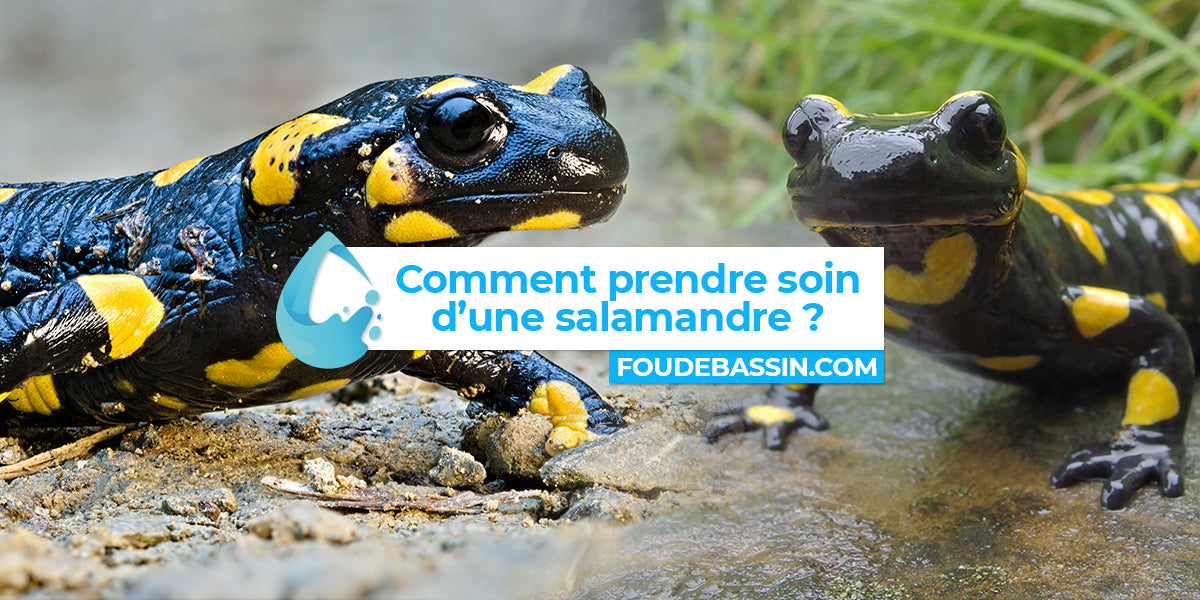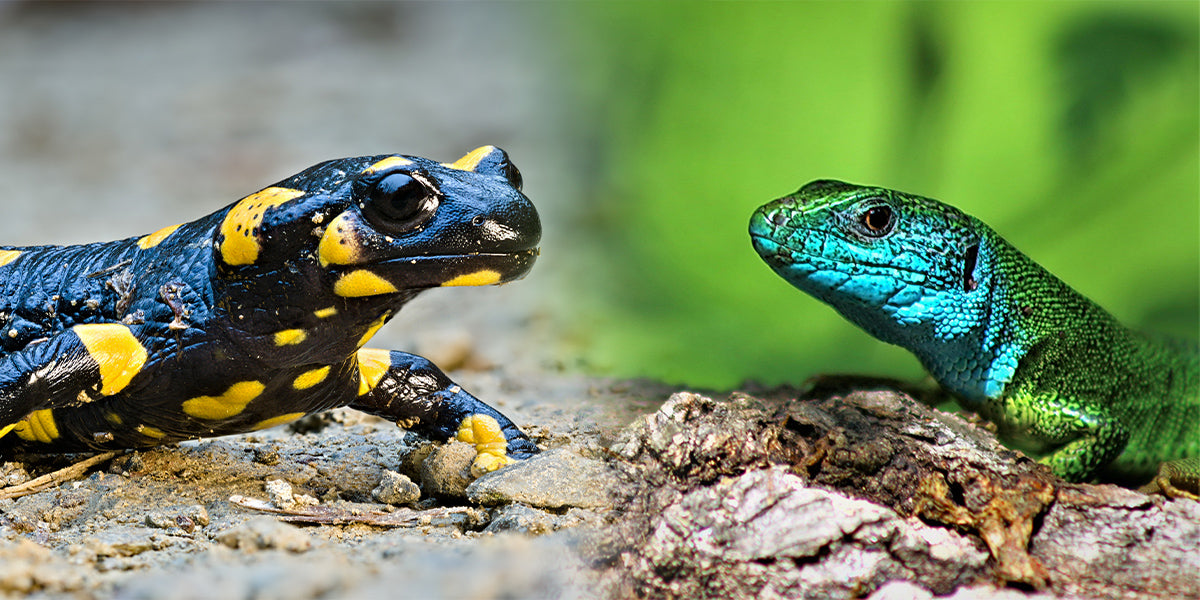Retrouvez ici les indispensables et meilleures ventes pour nos propriétaires de bassin.
Retrouvez ici les indispensables et meilleures ventes pour nos propriétaires de bassin.

You have just found a salamander in your garden or pond, and you are wondering what to do? If you found it near a wetland, it is better to leave it. It is an extremely important amphibian for the biodiversity cycle.
The best thing to do: Leave them in the wild ! It is best to avoid removing them from the wild or keeping them as pets. Indeed, these practices, which are considered harmless, have a significant impact on the local ecosystem. Removing salamanders from the wild will lead to and amplify the decline of local populations.
Discover the best guide by clicking right here > here <
Did you know? Globally, half of all salamanders are in danger of extinction. This is simply not acceptable!

⭐ You might be interested in: our advice for creating a natural terrarium
The term salamander refers to many species of amphibians. The most famous in the world is the one pictured below. In this case, it is the common salamander, also called the spotted salamander. A salamander is a slow-moving animal.
Like its cousin, the lizard, it is able to quickly regenerate parts of its injured body. With its short nose and long tail, the salamander can reach a size of 20 centimeters! This animal can live for about twenty years. In the wild (outside the terrarium), it is not uncommon to see it live for more than 40 years!

In general, we therefore advise you to release the salamander into the wild. However, if it behaves strangely and you wish to preserve it until adulthood, you can opt for a terrarium.
⭐ You might be interested in: all our articles on terrariums
Salamanders prefer a moist, humid habitat with plenty of hiding places. Cover the floor with bark chips, potting soil, or moss. Make sure the terrarium is kept cool, especially during the summer. Salamanders need humidity, so make sure to include a water feature in the terrarium.
Salamanders are nocturnal, it is best to feed them at night. What will the salamander eat? You can use aquatic turtle food or as salamanders are carnivores and should be fed with earthworms, slugs, wood lice, etc…
Handle your salamander as little as possible. Their delicate, moist skin does not tolerate too much handling. Also, do not use chlorine, which could injure the salamander. Its skin is actually its respiratory system. This animal needs a humid area at all times.

Here is a picture of a salamander that you can find in the northern regions of France and in Belgium.
The salamander can absolutely act as a useful helper in your vegetable garden, and even more so in permaculture. They feed on spiders, woodlice, beetles or even insects and slugs.
At the same time, salamanders also enjoy newts, small frogs and earthworms. Finally, salamander larvae mainly eat insect larvae as well as other small animals.
Up to 55 years, depending on the species; Most live about 10 years
Handling Handle your salamander as little as possible. Their delicate, moist skin does not tolerate too much handling. It is best to enjoy them from a distance
Aquipond Greenstab - Natural treatment against pond algae It is a natural product that helps limit algae at any time. It also has a prevent...
View full detailsReduces the layer of silt in the pond by at least 40% Easy to use with less impact on biodiversity Prevents fermentation, bad odors. pH ...
View full detailsOrganic dye to block plant growth by limiting photosynthesis ORGANIC PRODUCT NON TOXIC TO HUMANS (DIVING) AND FISH. 100% NATURAL AND BIODE...
View full detailsThe positive effects of barley straw have been known to water enthusiasts for a long time. But currently barley straw is difficult to find and i...
View full detailsReduces at least 40% of the layer of silt in the pond Easy to use with less impact on biodiversity Prevents fermentation, bad odors. ...
View full details